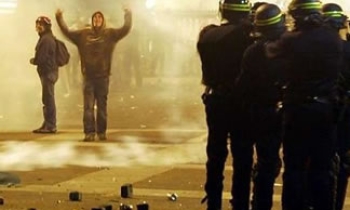The emergence of 24/7 television as a dominant news source and the explosive growth of the internet have led to major changes in the American public’s news habits. But this has had little impact on how much Americans know about national and international affairs. On average, today’s US citizens are about as able to name their leaders, and are about as aware of major news events, as was the public nearly 20 years ago, a new study has found.

What Americans Know: 1989-2007, conducted by the Pew Research Centre for the People and the Press, said, “On average, today’s citizens are about as able to name their leaders, and are about as aware of major news events, as was the public nearly 20 years ago… Aside from news media use, demographic characteristics, especially education, continue to be strongly associated with how much Americans know about the larger world. However, despite the fact that education levels have risen dramatically over the past 20 years, public knowledge has not increased accordingly.”
The findings are from an in-depth Pew Research Centre survey that interviewed a representative sample of 1,502 adults between February 1-13, 2007. Respondents were asked to identify public figures who had recently been in the news. They were asked questions that measured how much they knew about important and widely covered news events. Awareness of public figures varied widely.
The public’s ability to recall the names of leading political figures has not changed substantially since 1989. In the current survey, 69 per cent correctly named Dick Cheney as the vice president. In May 1989, slightly more (74 per cent) were able to name Dan Quayle as vice president. Somewhat fewer people could name their state’s governor now than did so in 1989, but again the differences are not dramatic (66 per cent now, 74 per cent then).
Some of the largest knowledge differences between the two time periods may reflect differences in the amount of press coverage of a particular issue or public figure at the time the surveys were taken. But taken as a whole the findings suggest little change in overall levels of public knowledge, the survey said.

Well-informed audiences come from cable (Daily Show/Colbert Report, O’Reilly Factor), the Internet (especially major newspaper websites), broadcast TV (NewsHour with Jim Lehrer) and radio (NPR, Rush Limbaugh’s programme). The less informed audiences also frequent a mix of formats: broadcast television (network morning news shows, local news), cable (Fox News Channel), and the Internet (online blogs where people discuss news events).
More than nine-in-ten Americans (93 per cent) could identify Arnold Schwarzenegger as the California governor or a former action-movie star — both responses were counted as correct in the scoring. An equally large proportion of the public identified Hillary Clinton as a US senator, a former first lady, a Democratic leader, or a candidate for president. Clear majorities can also correctly identify Secretary of State Condoleezza Rice (65 per cent) and Senator Barack Obama (61 per cent). House Speaker Nancy Pelosi was recognised by about half of the public (49 per cent).
Public knowledge of news events also varied widely. Nearly nine-in-ten (88 per cent) knew that as part of his revised Iraq strategy, President Bush planned to increase US military forces in the country. But only one-in-four Americans (24 per cent) were aware that both houses of Congress passed legislation to increase the minimum wage and 34 per cent knew that Congress voted to raise the minimum wage to $7.25 an hour.
Knowledgeable people, the survey found, tend to know things about both politics and foreign affairs while less informed Americans tended to know little about either subject, the survey found. For example, nine-in-ten of those who could name Vladimir Putin as the president of Russia also could identify Barack Obama. Similarly, nine-in-10 of those who didn’t know the Illinois senator also couldn’t correctly name the Russian leader.

More informed Americans enjoy keeping up with the news, believe they have a personal stake in what goes on in Washington, and are significantly more likely to be registered to vote than people who know less, the survey found. Among those in the third of the sample who know the most, the overwhelming majority (90 per cent) are registered to vote compared with about half (53 per cent) of the least knowledgeable Americans. The knowledgeable public also is more likely to see issues debated in Washington as having a direct impact on their lives (73 per cent vs 59 per cent).
In terms of knowledge of politics and current events, significantly fewer people now know that the US buys more goods from abroad than it sells than did so in 1989 (68 per cent now vs 81 per cent then). But the political climate for this issue also has changed considerably. During the late 1980s, the US trade deficit — especially trade tensions with Japan — drew much greater attention from the press and politicians than they do today.
On the other hand, there are subjects about which the public is better informed now than it was in 1989. Roughly three-quarters of Americans (76 per cent) know that the Democrats have a majority in the House of Representatives, compared to 68 per cent in 1989. The extensive press coverage of both the Democrats’ victory last fall and the new Congress may be factors in the relatively high level of public awareness of this fact.
“People inevitably must learn most of what they know about current events and political figures from the news media, since few have any direct way to obtain this information. Not surprisingly, people who say they regularly watch, read, or listen to the news know more than those who don’t. And people who use more news sources know more than those who use fewer sources. The differences are dramatic,” the survey said.

Nearly three quarters (73 per cent) of those who say they don’t get news regularly from any news source fell into the low knowledge group — correctly answering an average of only six out of the 23 questions in the quiz. By contrast, about half of those who regularly use at least seven sources score in the high knowledge group — getting an average of 18 questions correct.
Nearly four-in-ten people (37 per cent) regularly use at least one type of Internet news source, either the news pages of major search engines such as Google or Yahoo (25 per cent), the websites of the television news organizations (22 per cent), or the websites of major national newspapers such as the New York Times or USA Today (12 per cent). Additionally, about one-in-ten (11 per cent) read online blogs where people discuss events in the news. Two radio sources were included in the list: 28 per cent said they regularly listen to news from National Public Radio, and 8 per cent are regular listeners to Rush Limbaugh’s radio show.
“The fact that a particular news source’s audience is very knowledgeable does not mean that people learned all that they know from that source. Some news sources draw especially well-educated audiences who are keenly interested in politics. Because of their education and life experiences, these individuals have more background information and may be better able to retain what they see in the news, regardless of where they see it,” the Pew report said.









